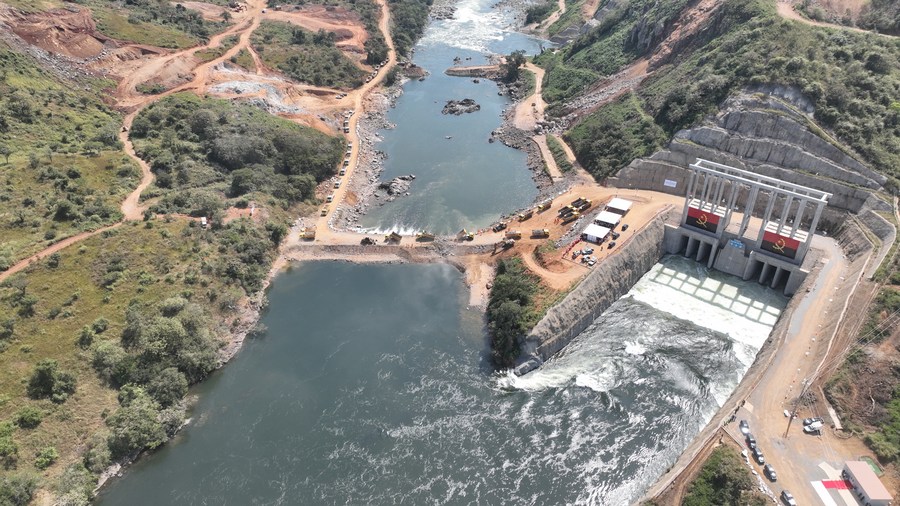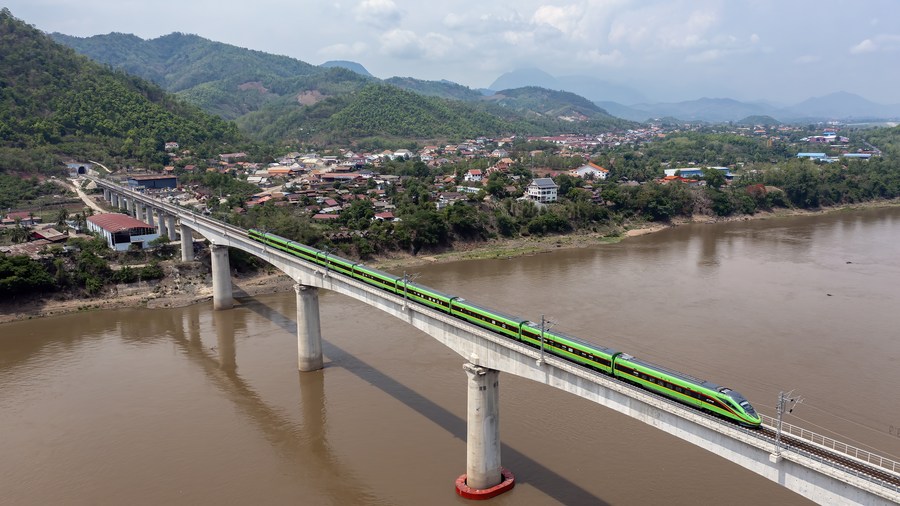BEIJING: China’s Belt and Road Initiative (BRI) has created new engines for global economic growth and a new paradigm for international cooperation, giving a boost to the development of China and other BRI countries.
China released a white paper titled “The Belt and Road Initiative: A Key Pillar of the Global Community of Shared Future” on Tuesday, underlining the initiative as “a Chinese solution to global development issues,” which aims to advance modernization in participating countries in tandem, make economic globalization more dynamic, inclusive and sustainable, and ensure that more of the fruits will be shared more equitably by people across the world.
At a press conference held Tuesday on the white paper, several Chinese officials fielded questions ranging from the initiative’s current status and cooperation mechanisms to its potential for future development.
NEW PARADIGM
“BRI cooperation has created a new paradigm for international cooperation, rising above the outdated mentality of geopolitical games,” said Li Kexin, director-general of the Department of International Economic Affairs of China’s Foreign Ministry, at the press conference.
Over the past decade, China has signed BRI cooperation documents with more than 150 countries and 30-plus international organizations.

People take selfies in front of the Peljesac Bridge in Komarna, Croatia, Aug. 29, 2023. The bridge, a project of China’s Belt and Road Initiative (BRI), was opened for traffic on July 26 last year. (Xinhua/Li Xuejun)
“The circle of friends has grown larger and larger, which fully proves that the initiative does not seek to form any closed and narrow circles,” said Li.
“Trade and investment have expanded steadily between China and other BRI countries in the past decade,” Vice Commerce Minister Guo Tingting said at the press conference.
From 2013 to 2022, the cumulative value of imports and exports between China and other BRI countries reached 19.1 trillion U.S. dollars, with an average annual growth rate of 6.4 percent, said the white paper.
The cumulative two-way investment between China and other BRI countries reached 380 billion U.S. dollars, including 240 billion U.S. dollars from China.

This aerial photo taken on May 20, 2023 shows a ceremony for the temporary diversion of the Cuanza River at the site of the Chinese-built Caculo-Cabaca Hydropower Station in Cuanza Norte province, Angola. (China Gezhouba Group Company Limited/Handout via Xinhua)
The BRI has connected the vibrant East Asia economic circle at one end with the developed European economic circle at the other, and includes the countries in between with huge potential for economic development, and also fostered closer economic cooperation with African and Latin American countries, according to the white paper.
FROM VISION TO REALITY
Since its launch 10 years ago, the BRI has evolved from ideas into actions, from a vision into reality, and from a general framework into concrete projects. It has been welcomed by the international community both as a public good and a cooperation platform, said the white paper.
BRI cooperation has delivered real gains to participating countries. It has contributed to the sound development of economic globalization and helped to resolve global development challenges and improve the global governance system, according to the white paper.
It has also opened up a new path for all humanity to realize modernization, and ensured that the efforts of building a global community of shared future are delivering real results, the white paper said.

Kelvin Josephat Kituruka (front), a native of Mwanza who joined the China Civil Engineering Construction Corporation (CCECC) as a quality engineer, helps local villagers with access to drinking water in Misungwi of Mwanza Region, Tanzania, June 13, 2023. (Xinhua/Wang Guansen)
Guo said in taking the next step China is working to foster new drivers of economic growth, while advancing large key projects as well as some “small yet smart” projects to help BRI participating countries lay a solid foundation for development.
China will create a pilot zone for Silk Road e-commerce cooperation and host the global expo on digital trade to share development dividends with other BRI countries, Guo added.

A train drives on the China-Laos Railway’s Luang Prabang cross-Mekong River super major bridge in Laos, May 28, 2023. (Photo by Chen Chang/Xinhua)
To facilitate two-way trade, Guo said China will work actively towards joining the Comprehensive and Progressive Agreement for Trans-Pacific Partnership and the Digital Economy Partnership Agreement.
Guo said China will also support companies from Hong Kong and Macao to participate in the construction of the Belt and Road and deepen cooperation in the green economy, digital economy and other fields, to achieve sustainable development in BRI countries. –Agencies






